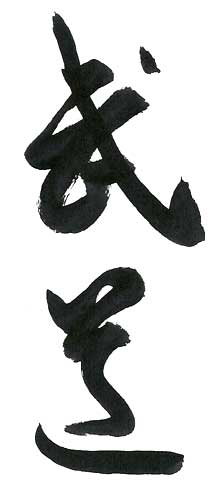
Budō is a Japanese term describing modern Japanese martial arts. Literally translated it means the "Martial Way", and may be thought of as the "Way of War" or the "Way of Martial Arts".

Gendai budō, or Shinbudō are both terms referring to modern Japanese martial arts, which were established after the Meiji Restoration (1866–1869). Kobudō or koryū are the opposite of these terms referring to ancient martial arts established before the Meiji Restoration.

Shaolin kung fu, also called Shaolin Wushu, or Shaolin quan, is one of the oldest, largest, and most famous styles of wushu, or kung fu of Chan Buddhism. It combines Chan philosophy and martial arts. It was developed in the Shaolin Temple in Henan province, Greater China during its 1500-year history. Popular sayings in Chinese folklore related to this practice include "All martial arts under heaven originated from Shaolin" and "Shaolin kung fu is the best under heaven," indicating the influence of Shaolin kung fu among martial arts. The name Shaolin is also used as a brand for the so-called external styles of kung fu. Many styles in southern and northern China use the name Shaolin.
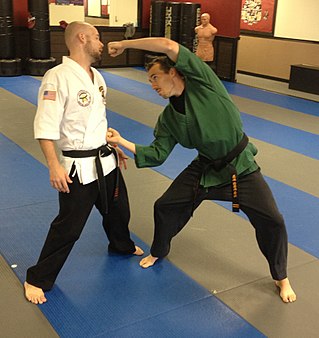
Kenpō is the name of several arts. The word kenpō is a Japanese translation of the Chinese word "quánfǎ" which literally just means "fist method" or "striking method". This term is often informally transliterated as "kempo", as a result of applying Traditional Hepburn romanization, but failing to use a macron to indicate the long vowel. The word Kenpō translates thus: "Ken" meaning 'Fist' and "Po" meaning 'Method' or 'Law' as in 'Law of gravity', a correct interpretation of the word Kenpō would be 'Fist Method', the same meaning as 'Quanfa'. However, it is often misinterpreted as 'the Law of the Fist'. The generic nature of the term combined with its widespread, cross-cultural adoption in the martial arts community has led to many divergent definitions.
Shorinji Kempo is a Japanese martial art claimed to be a modified version of Shaolin Kung Fu. The name Shōrinji Kempo is the Japanese reading of Shàolínsì Quánfǎ. It was established in 1947 by Doshin So [born Michiomi Nakano], a Japanese martial artist and former military intelligence agent who lived in China for many years before and during World War II.

Japanese martial arts refers to the variety of martial arts native to the country of Japan. At least three Japanese terms are used interchangeably with the English phrase Japanese martial arts.
The following outline is provided as an overview of and topical guide to martial arts:
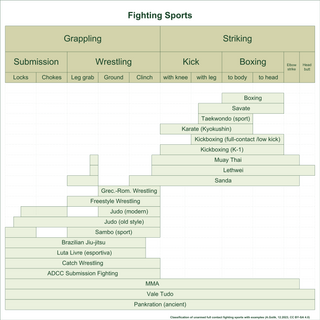
A combat sport, or fighting sport, is a contact sport that usually involves one-on-one combat. In many combat sports, a contestant wins by scoring more points than the opponent, submitting the opponent with a hold, disabling the opponent, or attacking the opponent in a specific or designated technique. Combat sports share a long history with the martial arts.
Hybrid martial arts, also known as hybrid fighting systems or sometimes eclectic martial arts or freestyle martial arts, referred to as mixed martial arts or fighting systems that incorporate techniques and theories from several martial arts. While numerous martial arts borrow or adapt from other arts and to some extent could be considered hybrids, a hybrid martial art emphasizes its disparate origins.
In martial arts, the terms hard and soft technique denote how forcefully a defender martial artist counters the force of an attack in armed and unarmed combat. In the East Asian martial arts, the corresponding hard technique and soft technique terms are 硬 and 柔, hence Goju-ryu, Shorinji Kempo principles of go-ho and ju-ho, Jujutsu and Judo.
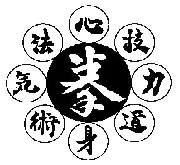
Nippon Kempo (日本拳法) is a Japanese martial art founded and created by Muneomi Sawayama in 1932. Sawayama was a judoka who had studied under Kenwa Mabuni, a karateka who would establish the Shito-Ryu school of Karate. There are multiple schools and groups based on the Nippon Kempo Association launched by Sawayama, and each has its own rules. It is typically practised wearing protective gear and gloves and allows full use of stand-up striking, throwing, and ground fighting.

Etsuko Shihomi, now known by her married name Etsuko Nagabuchi, is a Japanese actress who appeared in several Japanese martial arts films and samurai film and TV productions of the 1970s and 1980s.
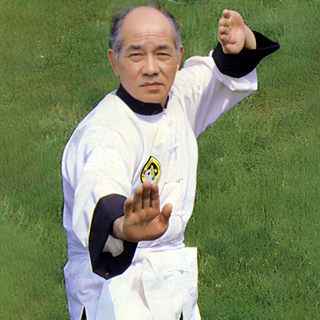
Chee Soo was an author of books about the philosophy of Taoism and in particular Lee-style tai chi, qigong, Ch'ang Ming, Traditional Chinese Medicine and Feng Shou 'Hand of the Wind' kung fu.
Seikichi Odo, whose name means "world walker" in Japanese, was a karateka. He combined kobudō and karate techniques to found the Ryūkyū Hon Kenpo Kobujutsu Federation.
Kenji Kazama is a Japanese. He played the henchman Spider who fought Fred Williamson in the 1973 action film That Man Bolt and he played Yokohama a mean and brutal Japanese official who fought Jhoon Rhee in the 1973 martial arts classic When Taekwondo Strikes. In 1974 he played the part of Senkaku Kan in the Sonny Chiba cult classic The Street Fighter.

Soleiman Mehdizadeh is an Iranian master of Budō.

The Byakuren Kaikan or Byakuren Karate is a full contact karate style founded in 1984 by Sugihara Masayasu.

Bōgutsuki Karate is one of the competition formats of Karate. It is also known as bōgu karate, bōgu-tsuki shiai (防具付試合), bōgu-tsuki kumite.
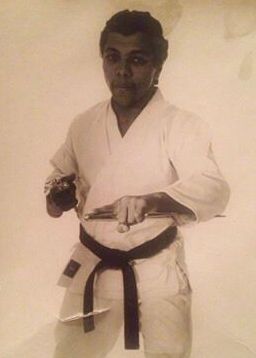
Ronald M. Taganashi was an American martial arts science philosopher and teacher. Taganashi was the founder of the American-Te Goju-Ryu martial arts system. He also founded the North American Heaven and Earth Society, which encourages students to learn about themselves, their spiritual beliefs, and their art.












